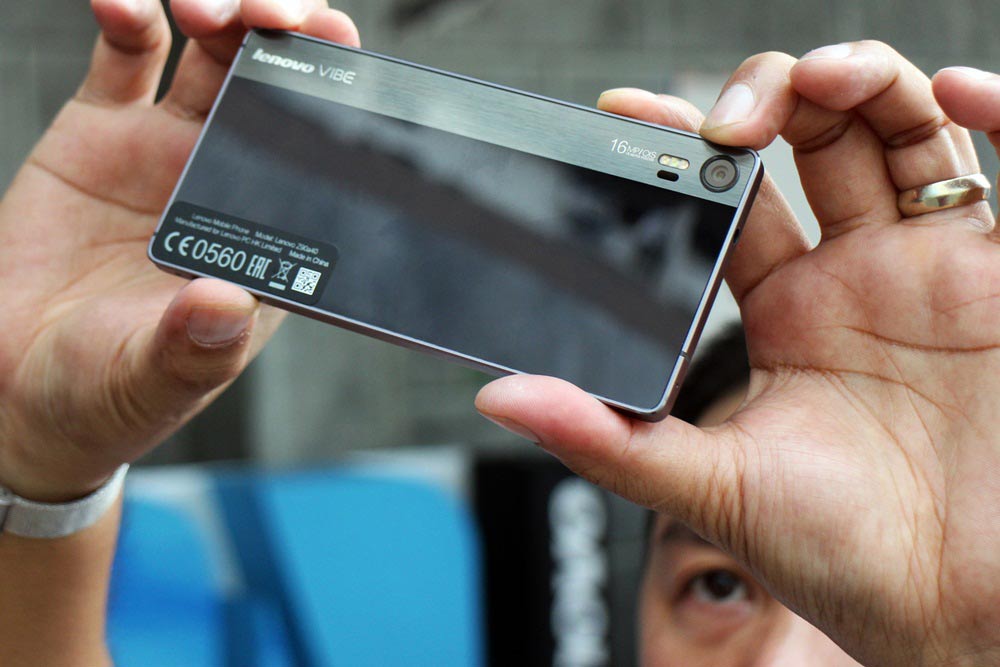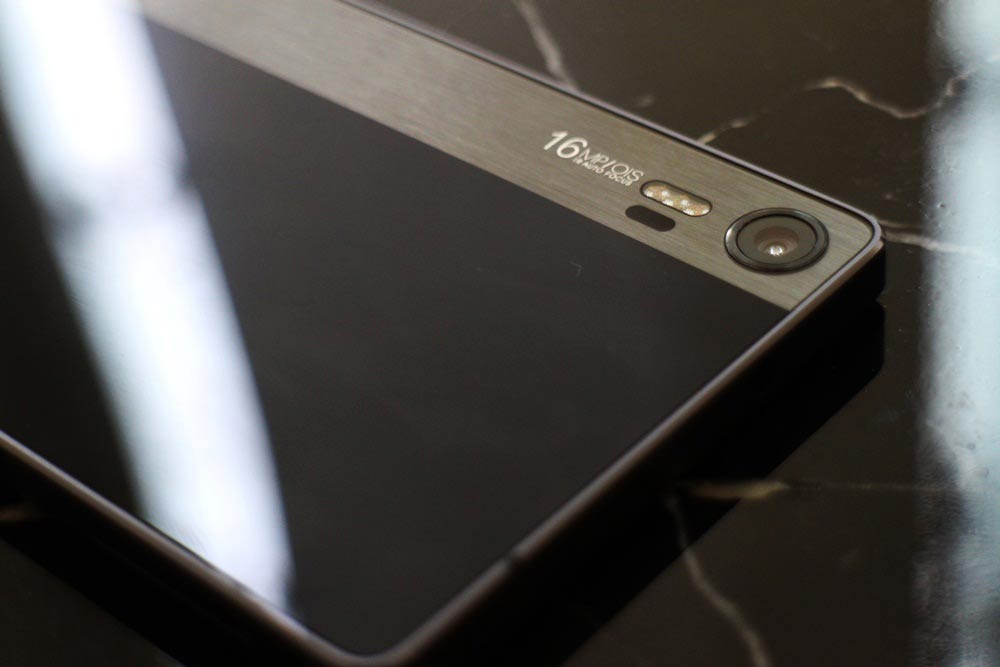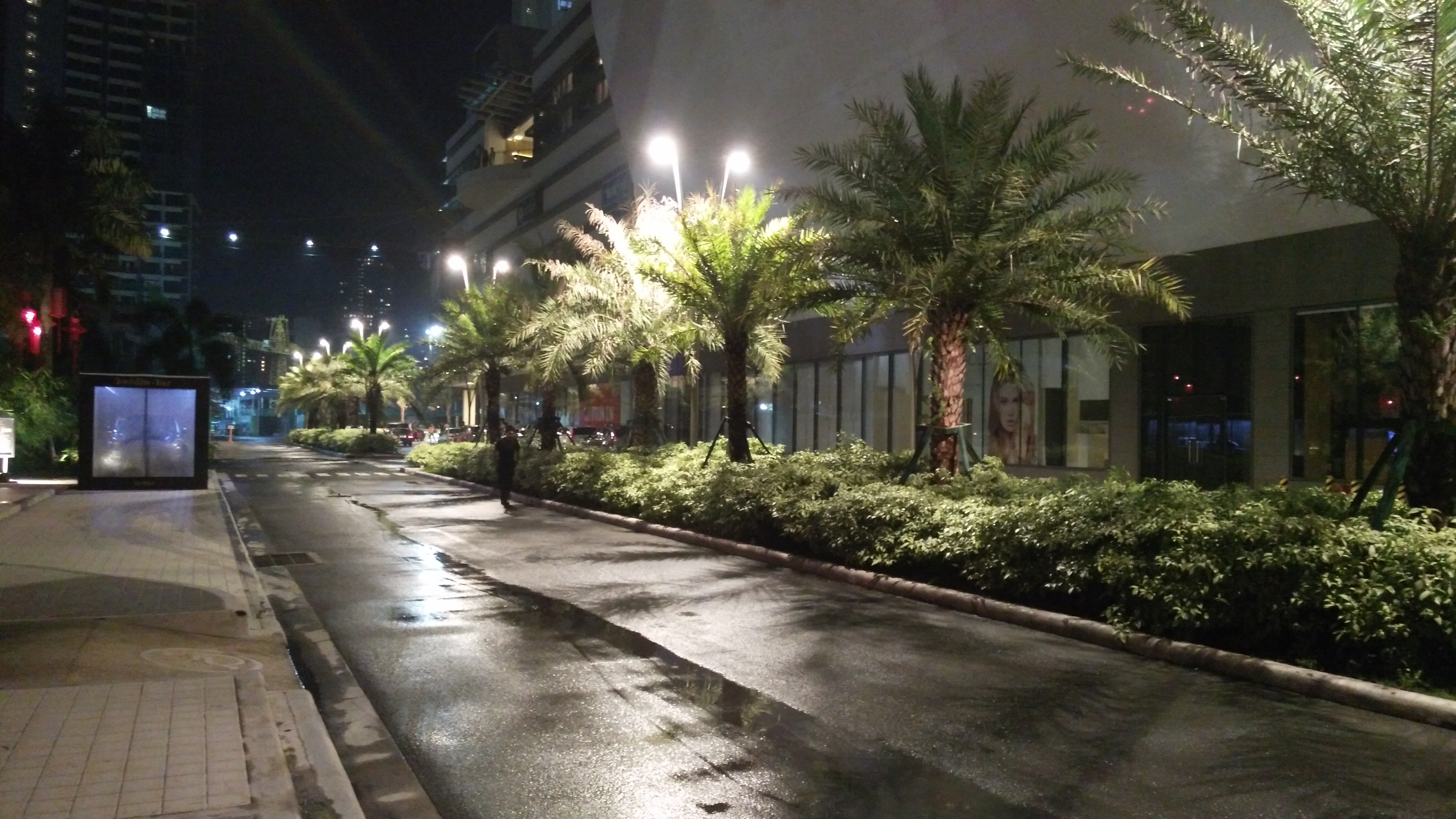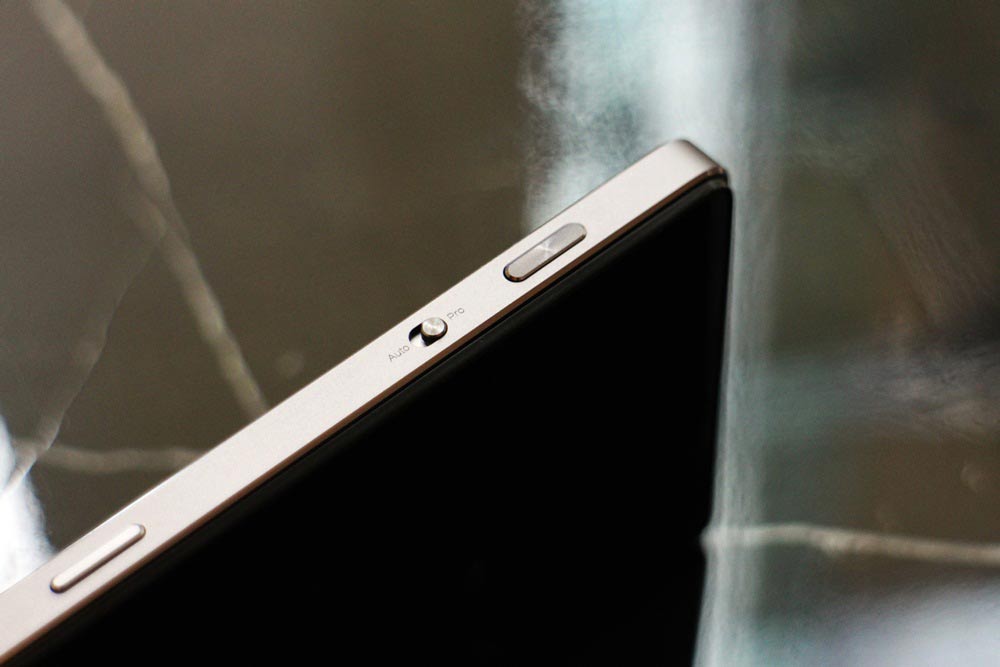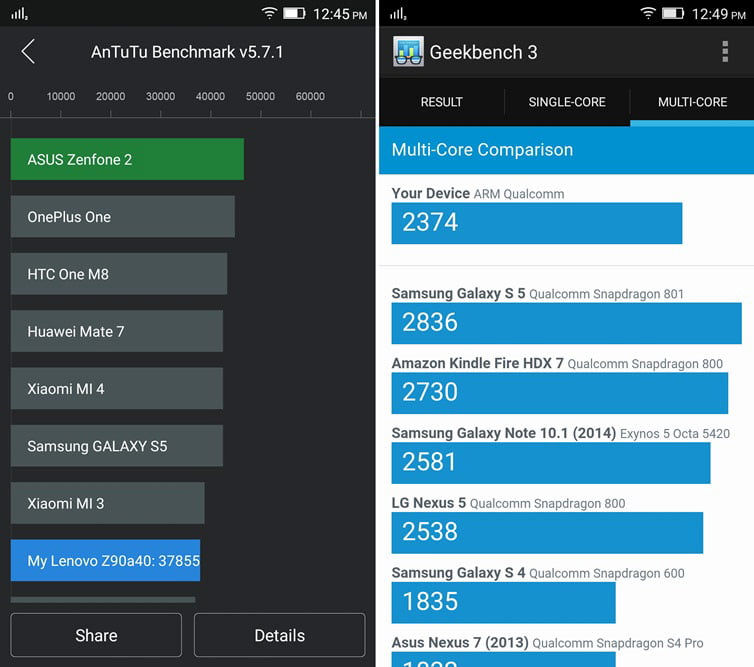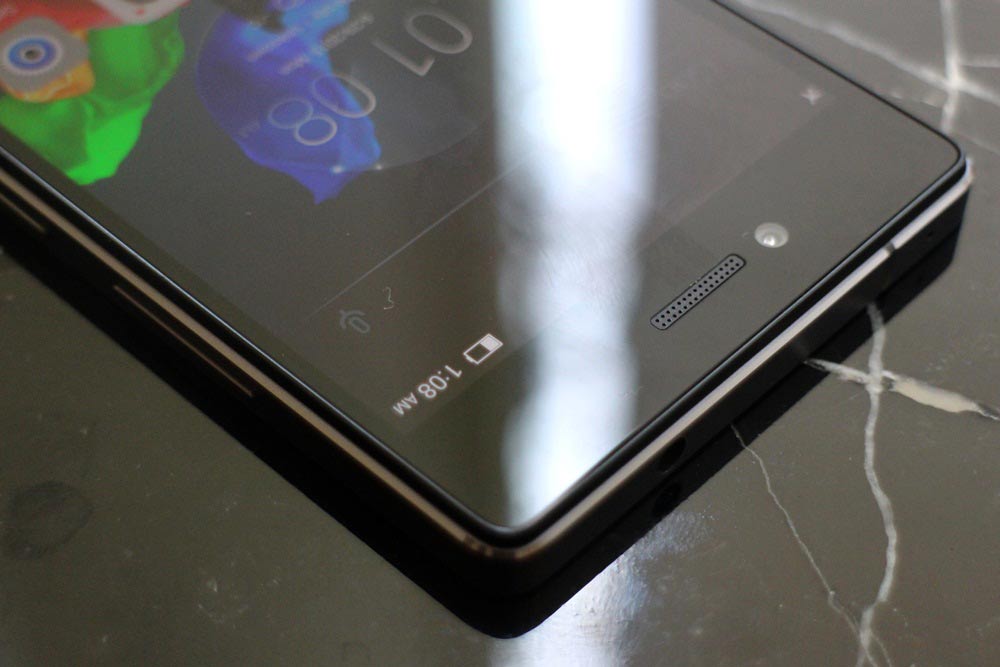Android has improved tremendously since its commercial launch in 2008 — its latest — and sweetest — iteration yet, Android Lollipop, is easily among the best in the business.
But I think we’re nearing a point where bleeding-edge specs no longer hold the sway they once did, as the cost of faster processing power is no longer as prohibitive and expensive as it once was. Smartphone innovation, it seems, is plateauing.
So where will the next wave of game-changing ideas come from? It’s fair to say the jury’s still out on that one, but Lenovo reckons the answer lies around the back, as evidenced by the Beijing-based manufacturer throwing its hat into the cameraphone ring when it announced the Lenovo Vibe Shot during the Mobile World Congress in Barcelona back in March.
A 5-inch Android Lollipop phone that combines pleasing aesthetics and impressive performance with a 16-megapixel rear camera surrounded by a laser autofocus sensor and tricolor flash, the Vibe Shot is already available in the Philippines through online retailer Lazada for P16,999. It works great as a camera, but it does its best work when it’s not taking pictures, say, inside dim restaurants or shooting a video at up to 1080p.
Despite what its name implies, the Lenovo Vibe Shot is an even better phone than the marketing would have you believe — and there’s nothing wrong with that.
So, in short: Despite what its name implies, the Lenovo Vibe Shot is an even better phone than the marketing would have you believe — and there’s nothing wrong with that. That only goes to prove how versatile the phone is.
Lenovo Vibe Shot specs (Price in the Philippines: P16,999):
* Dual SIM with LTE support
* 1.7GHz 64-bit, octa-core Qualcomm Snapdragon 615 CPU
* Adreno 405 GPU
* 3GB RAM
* 32GB internal storage
* microSD card slot (up to 128GB)
* 5-inch IPS display (1,080 x 1,920 resolution)
* 16-megapixel rear camera with tricolor flash and IR autofocus sensor
* 8-megapixel front camera
* 2,900mAh battery
* Android Lollipop 5.1
Let’s get to the most important spec right away: the 16-megapixel sensor with backside illumination and optical image stabilization integrated into the module. That’s a mouthful of technical jargon, but really, all you need to know is that it takes nice, Instagram-worthy photos in most lighting environments, without resulting in major compromises on color and clarity. It still succumbs to the trappings of shooting in low light, though not to the same extent as most phones in its class.
However, for all its competence, the Vibe Shot falls short of meeting the gold standard set by the Samsung Galaxy S6, LG G4, and Apple iPhone 6 (and 6 Plus). But then again, it’s not nearly as expensive, either. The front-facing camera goes up to 8 megapixels, more than enough for selfies and video calls.
For all its competence, the Vibe Shot falls short of meeting the gold standard set by the Samsung Galaxy S6, LG G4, and Apple iPhone 6 (and 6 Plus). But then again, it’s not nearly as expensive, either.
But picture quality is only half the story when it comes to the imaging experience at large. In order for a cameraphone to be truly great, it needs to be comfortable for daily use. And this is where the Vibe Shot’s two-step shutter key and physical toggle for switching between “Auto” and “Pro” (read: manual) modes come into play, as both combine to simulate the feeling of using a digital point-and-shoot and can be exceedingly helpful for getting the most out of the device.
I found that shooting in auto mode generally produced the results I desired so I rarely bothered to fiddle with the settings to get the best picture, and I think that speaks more to the phone’s capabilities than to my limited skills as a photographer. It’s especially rare to see a device embody the term “cameraphone” from a hardware and software standpoint, and the Vibe Shot succeeds in doing so, even if the results don’t equal the expectations.
The Vibe Shot’s two-step shutter key and physical toggle for switching between ‘Auto’ and ‘Pro’ modes combine to simulate the feeling of using a digital point-and-shoot and can be exceedingly helpful for getting the most out of the device.
You can’t talk about the Vibe Shot without touching on the design and its substantial feel in the hand, which I don’t mind one bit. The use of two glass panels — both of which provide a decent amount of scratch resistance, as I can attest to from personal experience — held together by a solid metal frame with chamfered edges is something I’ve seen more and more of recently, but the execution here is the best it could possibly be on a midrange device.
The only design choice I question is the protruding faceplate that’s begging to be hammered flush against the edges of the metal trim. I wouldn’t mind if the top and bottom bezels had been shorter, though. Not that it makes much difference to the overall handling experience; despite all shortcomings in the design department, the Vibe Shot remains easy to operate with one hand and is a welcome departure from the growing footprint of modern smartphones.
The use of two glass panels held together by a solid metal frame with chamfered edges is something I’ve seen more and more of recently, but the execution here is the best it could possibly be on a midrange device.
The Vibe Shot’s display, which has a 1080p resolution that stretches across 5 inches and makes for a pixel density that’s generally respectable by modern standards (440ppi), is one of its best attractions. It produces bright and vibrant colors that look great from almost any angle, though it doesn’t quite deliver the clean whites and deep blacks afforded by AMOLED panels.
The limitations of IPS panels aside, the screen is ideal for media, gaming, and just about everything you can throw at it. There’s an option to adjust color temperature to your desired levels, which I found useful for making reading a little easier on the eyes, especially during nighttime.
Power also plays a big role in the Vibe Shot’s story. I’m pleased to report that my review unit, which rocks a midrange Qualcomm Snapdragon 615 processor paired with 3GB of RAM, ran Lenovo’s moderately attractive UI that’s based on Android Lollipop 5.1 near-flawlessly. It was only when I deliberately fired up several resource-intensive apps that I managed to slow the phone down. But otherwise, you’d be hard-pressed to notice a dip in performance.
The Snapdragon 615 CPU inside the Vibe Shot ran Lenovo’s moderately attractive UI that’s based on Android Lollipop 5.1 near-flawlessly. It was only when I deliberately fired up several resource-intensive apps that I managed to slow the phone down.
I suppose some credit for the Vibe Shot’s speed and responsiveness should be handed to Lenovo as well. The company was wise not to bloat the handset with unnecessary apps and customizations that add little, if anything, to the software package. I also appreciate Lenovo’s decision to throw two SIM slots and LTE into the mix, even if it is expected. The 32GB of internal memory can be expanded with a microSD card if you need more space for photos and videos. The Vibe Shot is positioned as a point-and-shoot alternative, after all.
AnTuTu Benchmark (left) and Geekbench 3 (right) scores
As for the 2,900mAh non-removable battery tucked underneath the rear panel, I found it to be a curious case of a component that doesn’t live up to its potential. In Geekbench 3’s battery test, which simulates the phone running intensive apps with the screen turned on, the Vibe Shot lasted 6 hours and 36 minutes. For comparison, the Samsung Galaxy S6, with its 2,550mAh cell, managed 6 hours and 57 minutes using the same metric.
That’s not to say Samsung’s current flagship offers more mileage than my loaner unit in actual use — it doesn’t — or that the latter is a marathon runner of a smartphone — it isn’t; the Vibe Shot finds itself in the middle ground between average and exceptional. You’re still looking at a full day’s use between charges, but probably not enough juice to carry you through lunchtime on the second day.
Lenovo’s Vibe Shot isn’t as good a point-and-shoot replacement as Samsung, LG, and Apple have ever made, but it’s a great option for nearly everything else you’d use a smartphone for.
Lenovo set out to make a contender in the cameraphone segment, but ultimately fell short of the heights it might have reached had the company focused more on the imaging front.
The Vibe Shot isn’t as good a point-and-shoot replacement as Samsung, LG, and Apple have ever made, but it’s a great option for nearly everything else you’d use a smartphone for.
Share this Post

